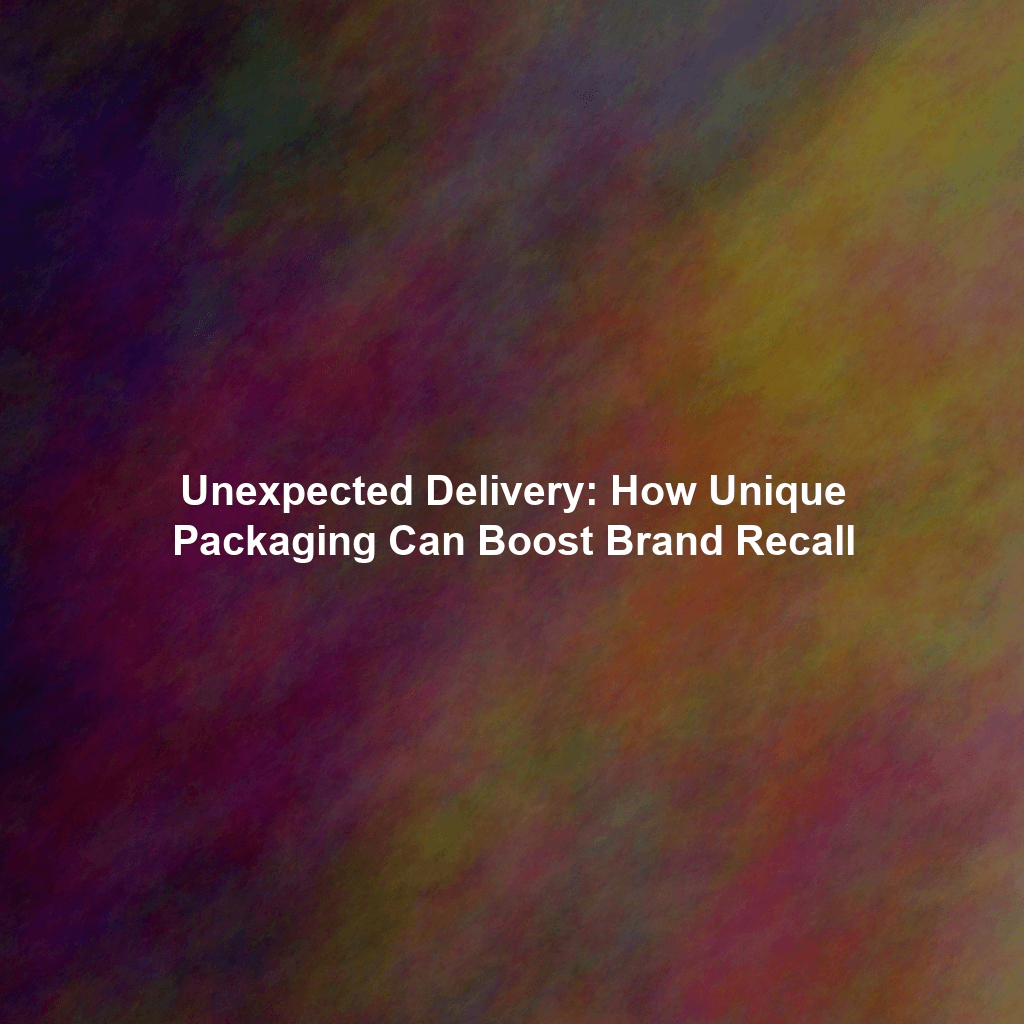Why Packaging Matters: More Than Just Protection
Let’s face it: most packaging ends up in the recycling bin (or worse, the trash). But what if your packaging could avoid that fate and become a miniature billboard, a conversation starter, or even a cherished keepsake? That’s the power of well-designed, unique packaging. It’s the first tangible interaction a customer has with your brand, and it sets the tone for the entire customer experience. Think of Apple’s minimalist packaging – it’s not just functional; it communicates a sense of premium quality and attention to detail. But, you don’t need Apple’s budget to make a splash.
First Impressions Count: The Initial Unboxing Experience
The “unboxing experience” is a buzzword for a reason. In the age of social media, people are eager to share their experiences, and packaging plays a crucial role. A memorable unboxing can generate organic buzz and turn customers into brand advocates. It’s free marketing! But to achieve this, you need to go beyond the ordinary. Think about incorporating elements of surprise and delight – a handwritten note, a small freebie, or even just a unique way of presenting the product.
Creative Packaging Examples: Inspiration from the Weird and Wonderful
Okay, let’s get into the fun stuff. Here are some examples of companies that are nailing unique packaging, often in delightfully weird ways:
- Bee Raw Honey: Instead of typical jars, Bee Raw packages their honey in test tubes, emphasizing the scientific precision and purity of their product. It’s unexpected and memorable, instantly setting them apart from competitors.
- Bloom Gin: Their bottle is designed with floral embossments, reflecting the gin’s botanical ingredients. It’s visually appealing and reinforces the brand’s identity.
- Puma (Clever Little Bag): Puma replaced the traditional shoebox with a reusable bag, significantly reducing cardboard waste and shipping costs. It’s eco-friendly, practical, and reinforces Puma’s commitment to sustainability.
- Whisky Me: A monthly whisky subscription that delivers single-serve pouches of whisky in a flat, letterbox-friendly package. The packaging is designed to be fun and engaging, with witty illustrations and information about the whisky inside.
- TEA-bag (by Soon Mo Kang): While a conceptual example, this design features tea bags shaped like different articles of clothing. It’s quirky, humorous, and unforgettable.
These examples highlight that unique packaging can take many forms – from unusual materials to innovative shapes to clever design elements. The key is to find a way to connect your packaging to your brand identity and resonate with your target audience.
Best Practices for Creating Memorable Packaging
Ready to create your own head-turning packaging? Here are some best practices to keep in mind:
Know Your Audience
Who are you trying to reach? What are their values and preferences? Tailor your packaging to appeal to their specific needs and interests. A luxury brand will have very different packaging requirements than a budget-friendly brand.
Connect to Your Brand
Your packaging should be an extension of your brand. It should communicate your brand’s personality, values, and story. Ensure consistent branding across all touchpoints, from your website to your social media to your packaging.
Think Outside the Box (Literally)
Don’t be afraid to experiment with unconventional materials, shapes, and designs. Consider using sustainable materials, incorporating interactive elements, or adding a personal touch (like a handwritten note).
Focus on Functionality
While aesthetics are important, don’t sacrifice functionality. Your packaging should protect the product inside and be easy to open and use. Poorly designed packaging can lead to frustration and damage your brand’s reputation.
Consider Sustainability
Consumers are increasingly concerned about the environmental impact of packaging. Opt for eco-friendly materials and designs that minimize waste. This can be a major selling point and enhance your brand’s image.
Test and Iterate
Before launching your new packaging, test it with a small group of customers to get feedback. Use this feedback to refine your design and ensure it meets your objectives. A/B testing can be very useful here.
Measuring the Impact of Unique Packaging
How do you know if your unique packaging is actually working? Here are some metrics to track:
- Brand Recall: Conduct surveys or focus groups to assess whether customers remember your brand after seeing your packaging.
- Social Media Engagement: Monitor social media for mentions and shares related to your packaging.
- Website Traffic: Track whether your packaging is driving traffic to your website.
- Sales: Analyze sales data to see if there is a correlation between your new packaging and increased sales.
- Customer Reviews: Read customer reviews to gauge their reaction to your packaging.
The Weird Marketing Advantage
Ultimately, unique packaging is more than just a design choice; it’s a strategic marketing tool. By investing in creative and memorable packaging, you can boost brand recall, enhance the customer experience, and gain a competitive edge. Embrace the weird, think outside the box (pun intended!), and let your packaging do the talking. It’s one of the most surprising and effective ways to hack your growth.
So, next time you’re thinking about your packaging, don’t just think about protection. Think about creating an experience – a moment of delight that customers will remember long after they’ve opened the box.
 Skip to content
Skip to content

